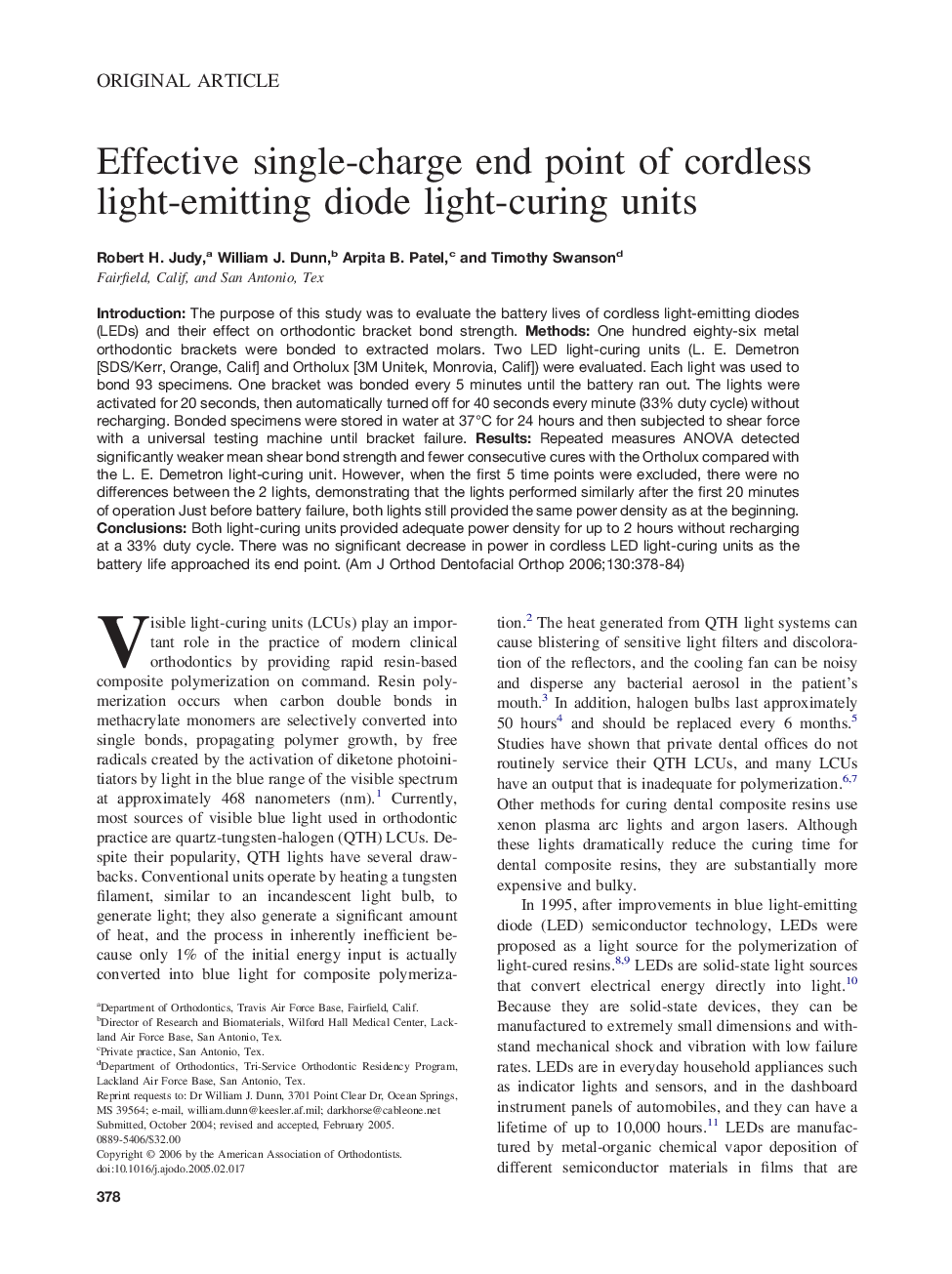| Article ID | Journal | Published Year | Pages | File Type |
|---|---|---|---|---|
| 3119515 | American Journal of Orthodontics and Dentofacial Orthopedics | 2006 | 7 Pages |
Introduction: The purpose of this study was to evaluate the battery lives of cordless light-emitting diodes (LEDs) and their effect on orthodontic bracket bond strength. Methods: One hundred eighty-six metal orthodontic brackets were bonded to extracted molars. Two LED light-curing units (L. E. Demetron [SDS/Kerr, Orange, Calif] and Ortholux [3M Unitek, Monrovia, Calif]) were evaluated. Each light was used to bond 93 specimens. One bracket was bonded every 5 minutes until the battery ran out. The lights were activated for 20 seconds, then automatically turned off for 40 seconds every minute (33% duty cycle) without recharging. Bonded specimens were stored in water at 37°C for 24 hours and then subjected to shear force with a universal testing machine until bracket failure. Results: Repeated measures ANOVA detected significantly weaker mean shear bond strength and fewer consecutive cures with the Ortholux compared with the L. E. Demetron light-curing unit. However, when the first 5 time points were excluded, there were no differences between the 2 lights, demonstrating that the lights performed similarly after the first 20 minutes of operation Just before battery failure, both lights still provided the same power density as at the beginning. Conclusions: Both light-curing units provided adequate power density for up to 2 hours without recharging at a 33% duty cycle. There was no significant decrease in power in cordless LED light-curing units as the battery life approached its end point.
